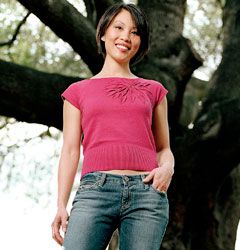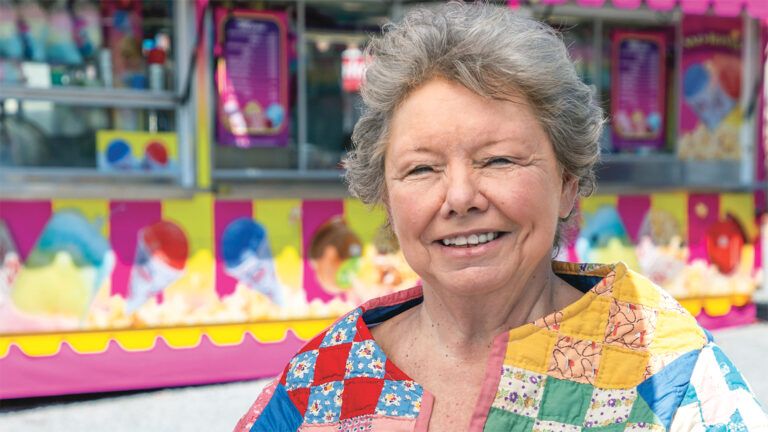I woke, my head spinning. A wave of nausea hit me. I crawled to the bathroom and threw up, then broke out into a cold sweat. I’d been feeling run down for a couple of days, but this was way worse than the flu. I staggered to my parents’ room. Never in my life had I felt this weak. And thirsty. What was wrong with me?
Up until then, like a lot of 23-year-olds fresh out of college—UCLA, in my case—I was pretty carefree. The only thing vaguely troubling me was that I wasn’t sure of my direction in life. I had a solid job as a customer advocate at an internet company but I wasn’t passionate about my work or fulfilled by it the way that I wanted to be.
I thought about going back to school, but I had no idea what I wanted to study. Sometimes I wrote in my journal about feeling unsettled. I didn’t tell anyone, though. In Chinese culture, we tend to keep our problems to ourselves because we don’t want to worry other people.
But there was no hiding how sick I was that morning. Mom suspected it was my blood sugar. She and Dad both have Type 2 diabetes, which means their bodies don’t produce enough insulin or use it properly. Type 2 runs on both sides of my family and it’s more common in Asian Americans than the general population. I figured I’d get it one day. Just not so soon! Not while I was young, healthy and active.
Mom took me to the doctor. I called my best friend from the waiting room. “My mom thinks I might be…” I said, but my voice cracked when I got to the word “diabetic.”
Given my family history, the doctor thought I had type 2 diabetes. She sent me home with the same medication my parents used. But the next day I felt even worse. Mom and Dad rushed me to the hospital.
It didn’t take the ER doctor long to make a diagnosis. I listened to the list of medical terms. “Diabetic ketoacidosis…absolute insulin deficicency…hyperglycemia…dehydration…Type 1.”
Type 1? My body produces no insulin at all? Because of my parents, I knew a little about diabetes, and what I knew about Type 1 scared me. Insulin injections every day. Constant monitoring of my blood sugar. A long list of dietary restrictions. I broke down and cried. My life would never be the same again!
The next few weeks proved it. The syringe supplies, the injections, the countless blood sugar checks left no room for spontaneity or fun. No more carefree California girl. I might as well have moved to a nursing home.
One day a friend called. “A bunch of us are going to get dinner and see a movie. You in?” I couldn’t eat what they ate, I couldn’t split a box of candy at the movies, and I’d have to take a shot of long-acting insulin at 9 p.m. How could I do that in a theater? “No, thanks,” I said. Same thing I’d been telling everyone else who tried to coax me out.
Mom and Dad did their best to cheer me up. They practically dragged me downtown one day to go shopping. Anything I glanced at, Mom would offer to buy for me. I just wanted to go home and be alone in my room.
“It’s all our fault,” Mom said. “We gave you bad genes.” Tears welled in her eyes.
For the first time since my diagnosis, it hit me: My negativity was as much a disease as my diabetes. I’d been acting like a different person since I came home from the hospital—withdrawn, depressed, bitter. I’d been too busy feeling sorry for myself to see how much worry I was causing my parents. They brought me up to be better than this, I thought. That’s when I decided: I can’t change my diagnosis, but I can change my attitude.
“Is there anything I can do to manage my diabetes better?” I asked. “Sure,” Dad said, his face lighting up. He showed me how to chart my blood sugar levels and keep a detailed record of my food and insulin intake. I noted how I felt and what I was doing, so I could see how activity and stress affected my blood sugar. I found out more about Type 1 on the internet. I could still lead a fun, active lifestyle—as long as I managed my diabetes well.
I went with my mom to see a diabetic educator. The educator was impressed with the charts Dad and I had made. “You should check out these classes offered by the hospital,” she said. “Sign me up!” I said. Mom squeezed my hand.
In one class, there was a shy high school girl. She made me remember the pressures of high school. All any teenager wants is to fit in. What about those late nights studying for finals, snacking on chips and candy? It would’ve been so easy not to take care of myself back then. There’s no good time to get diabetes, but I felt lucky to have been diagnosed after college. Realizing this made me even more motivated to take charge of my diabetes.
I reexamined everything from my insulin pump, which I went on six months after my diagnosis, to my medical ID tag. Why couldn’t they be fun as well as functional? I designed pump straps—an everyday version in gray, a “going out” strap with beads, a “flirty” strap that’s pink with black lace. I made a collection of beaded bracelets I can mix with my ID tag to match my outfits.
Each and every day I learned from dealing with my diabetes. And the more I learned, the more I wanted to share my experiences with other diabetics.
Then I met Justin, the man who helped make it all happen. He encouraged me to write a blog, an online journal, about living with diabetes. He even designed a website for me. I named my blog Diabetties. (If you haven’t seen the movie Clueless, “Betty” is California lingo for a cute girl.)
I wrote about getting diagnosed. About my mistakes and what I learned from them. Studies on diabetes in Asian Americans. Everyday stuff too. It was freeing to express my thoughts. But I never expected the e-mails that came in. “I’m not taking care of myself… Reading your story has given me a kick in the butt.” “You understand how hard it is to be normal when you have to shoot up all the time…thanks!”
My blog got attention, and I spoke at diabetes groups. It was cool how helping others helped me. At my day job, I’d never felt like this: so energized and empowered.
So I left my job. I’m now in grad school, working on a master’s in public health. I want to help teach people with chronic illnesses that they’ve still got a whole lot of living to do. Look where diabetes led me. I learned there are people I can count on no matter what, like my mom and dad and my fiancé (Justin and I got engaged New Year’s Eve). I discovered that I do have my own direction and that changing my attitude can change my life.
Download your FREE positive thinking ebook!




